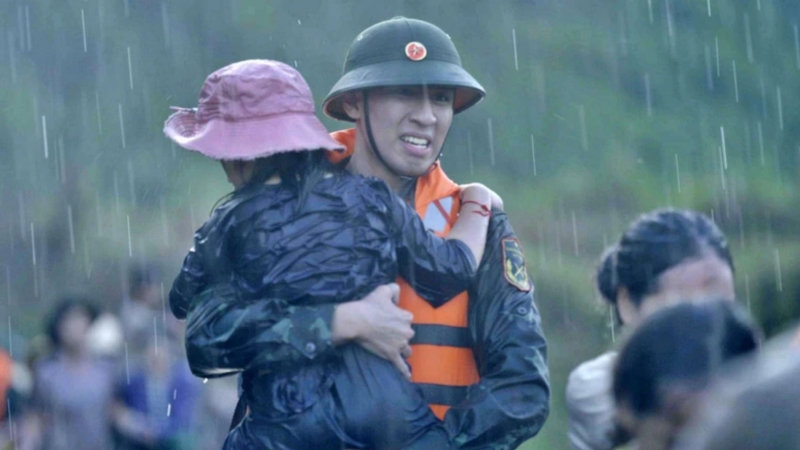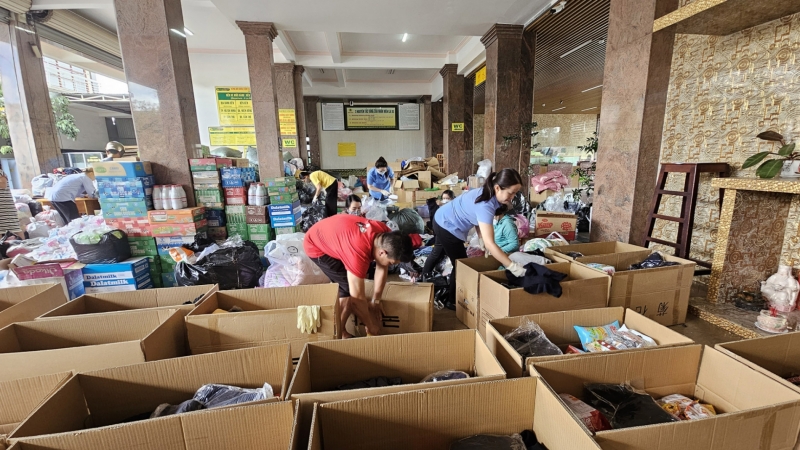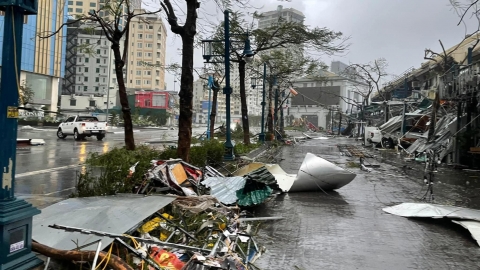According to the Bangkok Post, military troops and volunteers have been urgently mobilized by the Thai government to fill sandbags to prevent the increasingly tense flood situation, especially in the context that another flood will continue to flood the center of Chiang Mai on the evening of September 25.
The Ping River has exceeded the warning level, threatening to submerge the entire downtown area of Chiang Mai. Images of submerged houses and streets turning into rivers are clearly present in everyone's mind. The water level at Nawarat Bridge, measured at 6 a.m. on September 25, exceeded the maximum level of 4.45 meters. The river continues to rise, flooding the vast downtown area of Chiang Mai.

Sandbag fences were quickly built by military forces to guard against the approaching natural disaster.
Faced with the urgent situation, the local government quickly deployed response measures. Trucks loaded with sandbags continuously drove along the banks of the Ping River, forming a solid wall to block the raging water. Volunteers, with the support of the armed forces, worked day and night, tirelessly stacking sandbags one by one. In addition, local residents were also provided with enough sandbags to protect their homes.
Many drainage pipes have burst due to the volume of floodwaters. In the central Muang district, water levels are 30-50cm or even deeper, making some areas impassable. Many residents say the current situation has similarities to the worst flooding in Chiang Mai in 2022.
Chiang Mai authorities have opened temporary shelters at the city hospital for those in need, with priority given to bedridden patients and the elderly. Authorities have been asked to be on high alert as a new flood is expected to hit the city tonight.

The water level of the Ping River has exceeded the alarm threshold, threatening to submerge the entire downtown area of Chiang Mai.
The Royal Irrigation Department said that Typhoon Soulik, with its devastating force, swept through the Chiang Mai area, leaving behind severe consequences. The storm was followed by a low pressure area, bringing torrential rains that have been falling continuously since September 21. The combination of these two harsh natural factors caused the water level of the Ping River to rise suddenly, causing severe flooding, submerging many areas of the city.
Thai Prime Minister Paetongtarn Shinawatra on September 24 also reaffirmed that the government's top priority is to solve the flood problem, support flood victims and quickly overcome the consequences in flood-ravaged areas. Tourists traveling to Thailand need to prepare carefully, learn about the local flood situation to ensure their own safety, and update safe locations to move to when necessary.

Chiang Mai city authorities warn tourists to ensure safety in the current situation.
Chiang Rai, especially Mae Sai and Mueang districts, are still submerged in murky water and mud after the historic flood. Statistics show that this is the worst flood in the past three decades, severely damaging the lives of local people. When the water receded, what remained was a desolate scene: ruined houses, uprooted trees, and garbage everywhere. Tens of thousands of tons of domestic and industrial waste were swept away by the flood, now covering the roads and fields, causing serious environmental pollution.




































